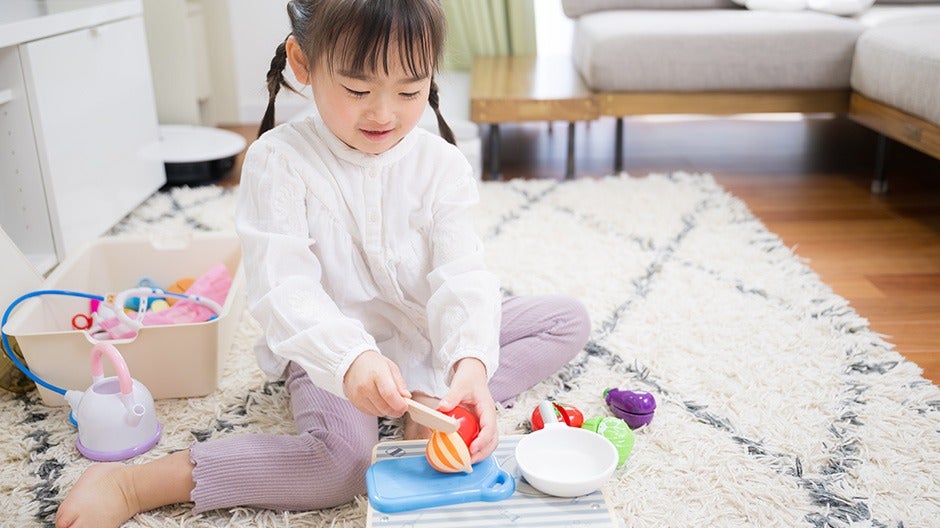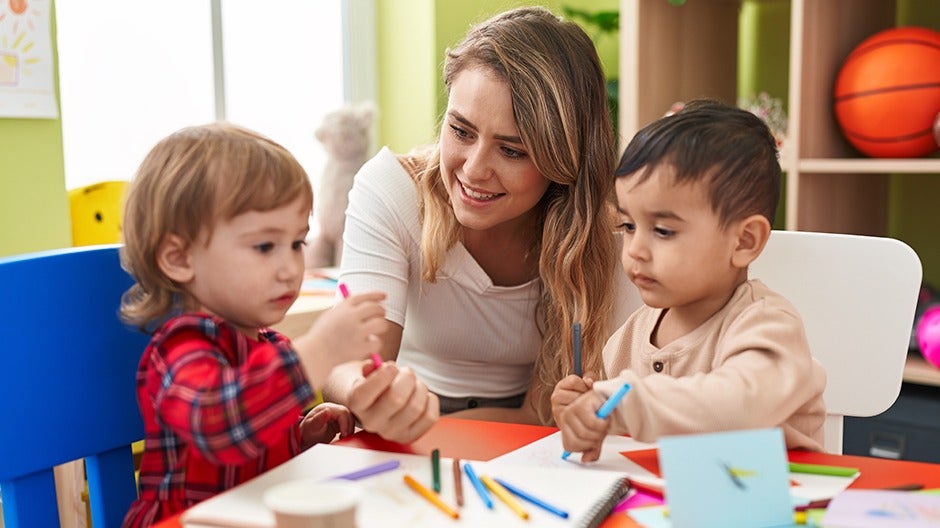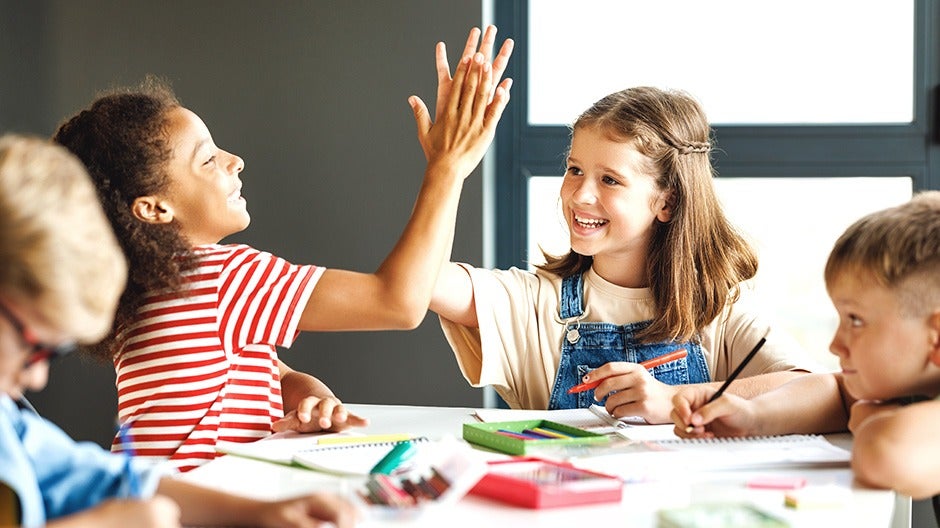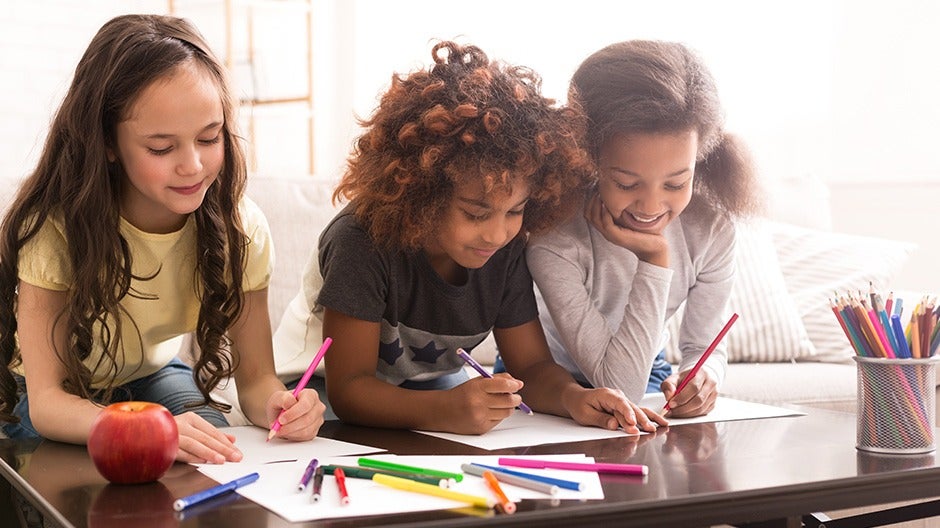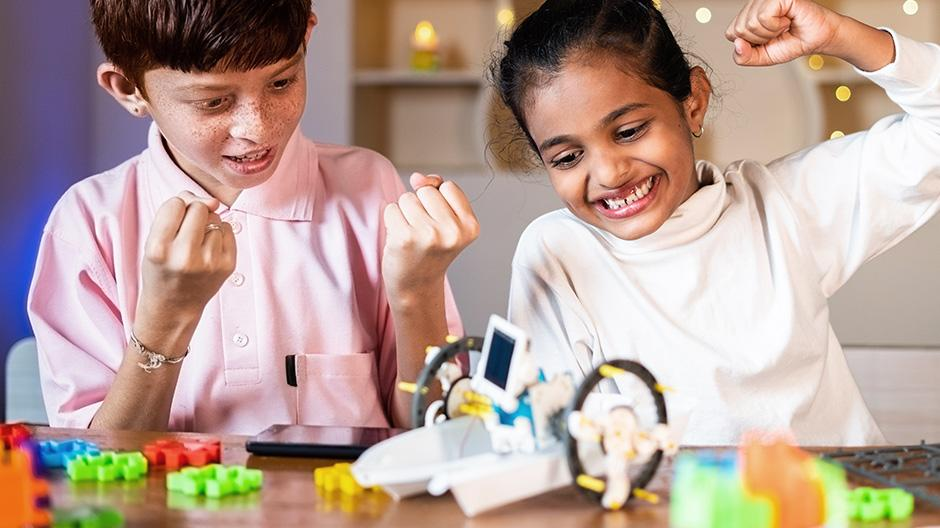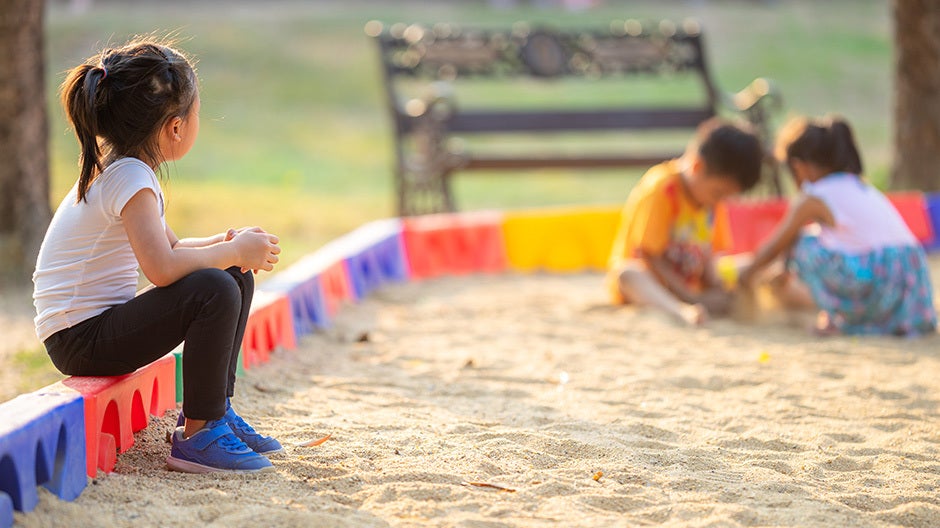Teaching children about their feelings can be challenging. That’s because feelings themselves are complicated. Although emotions for kids can be an abstract concept, understanding emotions is an essential part of growth and development.
In this article, we’ll dive into the reasons why children need to understand their emotions. We’ll also share some effective strategies you can implement to help your child learn how to manage their feelings well.
The Challenge With Emotions For Kids
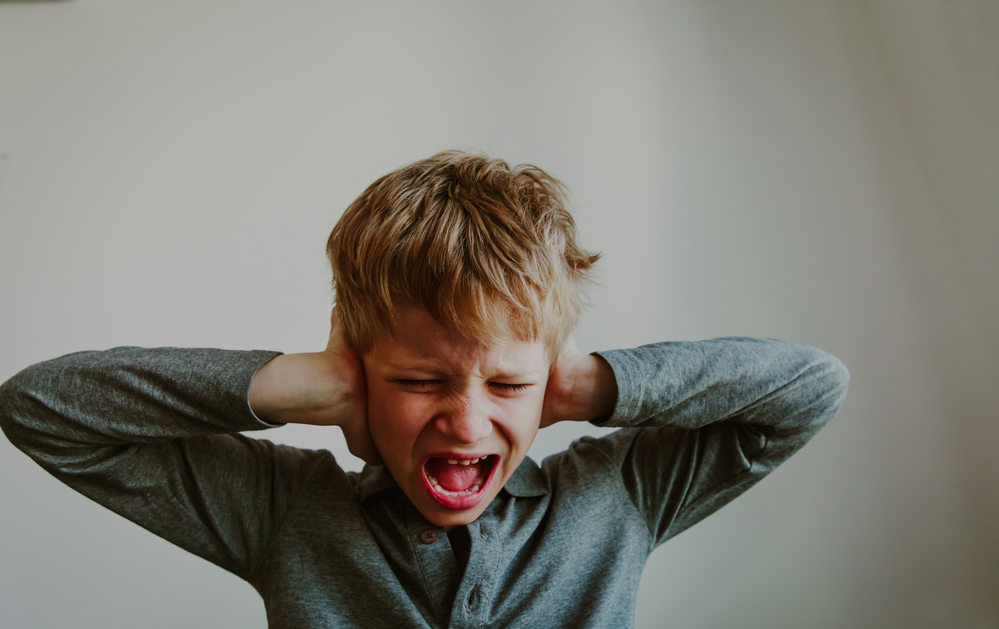
Kids experience the same emotions as adults. They get angry, frustrated, sad, scared, excited, jealous, worried, and so on. Unfortunately, children usually don’t have the vocabulary to express their emotions clearly.
Because of where they are in their development, they express feelings through their facial expressions, body language, or in how they play. They might even act out (e.g., throwing a tantrum, hitting, biting) when the emotions get overwhelming.
It’s important to note that while throwing a tantrum can be frustrating for a parent, it’s actually perfectly normal for young children.
We can’t promise that your child will never again have a tantrum or become disappointed, angry, or sad about something. In fact, we are sure they will. But we can promise that better understanding emotions and how to express them allows children to successfully address what they are feeling and why.
Why Do Kids Need To Manage Their Emotions?
It’s normal for children to experience different emotions, but learning to manage those feelings can benefit kids in many ways. Let’s take a look.
1) Stronger Coping Skills

Strong emotions such as frustration, anger, or even disappointment can be challenging for anyone (including adults) to deal with. But these are a part of life, and, unfortunately, we can’t shield our children from experiencing these feelings.
As parents, the best thing we can do is help our children learn to recognize and express their emotions in healthy ways. When they can do this, it gives them the ability to cope in different, challenging situations.
In fact, with the right tools, they can bounce back more easily after experiencing complex feelings. They also learn to avoid destructive behavior (e.g., hurting others or themselves).
2) More Stable Relationships
When children can express their feelings in a healthy way, it gives them a better chance of making friends and having more stable relationships.
For example, let’s say your child has a friend who always borrows their toys during playtime and never returns them. Many children might start a fight, cry, or even physically grab the toys to get them back. Teaching your child, though, to express how they feel might yield better results for everyone involved and prevent arguments.
3) Better Experience In School

A child’s school years can be some of the most emotionally challenging years of their life. They’ll make friends and lose friends, do well in some classes and not great in others. And then enter into the teen years, full of emotions and raging hormones.
With all of these highs and lows, helping your child understand and effectively communicate their emotions from early childhood can give them a better overall experience in school.
4) Self-Awareness
Expressing emotions doesn’t always have to be an outward experience (i.e., speaking to someone or yelling into a pillow). Sometimes, we can process our emotions inside our heads.
For example, instead of getting mad at someone for their actions towards us, we can forget about who we’re angry at, what they did or said, and just focus on what we’re feeling.
We can say to ourselves, I’m so angry right now, and that’s OK. These simple words can help get rid of the power of that emotion. They can also ease anxiety and allow us to see the problem in a new light.
While it might take time for children to reach this point of self-awareness, introducing this technique early will put them on the right track to understanding their feelings. It will also loosen the grip that emotions can have.
5) Improved Family Life

If you have multiple children, you know that it can be challenging for them to get along. Perhaps they will not be best friends overnight, but helping children understand their feelings and express them in healthy ways can lead to less stressful family life.
Now that you understand some of the incredible benefits of teaching children about emotions, let’s get into the six effective strategies you can try at home today.
6 Ways To Help Kids Understand Their Feelings
1) Give It A Name

The first step in helping your child understand and identify their different emotions is to give those emotions names. This allows children to start developing an emotional vocabulary that they can use to express themselves.
For preschoolers, you can teach basic feeling words, like mad, happy, scared, and sad. Once a child gets older, you can introduce more complex feeling words, like disappointed, frustrated, and nervous.
2) Respond With Empathy And Validation
When our children come to us with their hurt feelings, it’s easy to try to quickly “fix” the situation so that they are no longer hurting.
While this might be a natural instinct for many of us, the most effective first response is to respond with empathy and validate their feelings.
For example:
You are mad because you want to eat another cookie right now. I understand.
Timothy didn’t want to share his toy with you, and this made you sad. I understand.
These simple responses will help a child feel heard, understood, and not judged. It might also encourage them to continue using their emotional vocabulary instead of immediately acting out.
3) Teach Coping Strategies
After expressing their emotions verbally, children might still feel the need to act out (i.e., hit someone). But it’s essential to teach them to deal with uncomfortable emotions in a more productive way.
For example, you can encourage your child to take a self-timeout. Essentially, they can go to a quiet spot and calm themselves down.
If they love to draw, you can also have some drawing supplies ready for them to use to express themselves artistically. Sometimes even a quick walk outside does the trick!
There are multiple effective calming strategies for kids. And helping children know that there’s an alternative to throwing tantrums or exhibiting attention-seeking behavior allows them to deal with their emotions better.
4) Talk About Your Feelings

If you want to encourage your child to talk freely about their feelings, you, your partner, and everyone else around the house must do the same thing.
For example:
My friend isn’t feeling well, and that makes me sad.
Someone bumped my car while it was parked. This made me really angry.
This can be challenging because, as adults, we don’t always feel comfortable sharing our feelings with children. We may not want to burden a child with our problems, or maybe we’re concerned about exposing the child to adult situations.
While it is true that some feelings are not appropriate to share, it’s also true that when we talk about our emotions, we give children permission to do the same. Modeling emotions for kids in this way can help them get comfortable sharing how they feel with others.
5) Read About It
Sometimes reading books about characters dealing with the same emotions we are dealing with gives us a new perspective.
Here are a few great books to help your child understand their complex feelings:
- Grumpy Monkey
- Ruby Finds a Worry
- In My Heart: A Book of Feelings
- The Boy With Big, Big Feelings
- The Color Monster: A Story About Emotions
While reading these types of books, remember to discuss how the characters may feel. At appropriate times, pause and ask, How do you think she is feeling right now? Why?
6) Encourage And Praise
Lastly, remember to praise your child for expressing their emotions — even if you have to guide them a bit to finding the best ways to act on those feelings.
Let them see that they are not bad for feeling jealous of their friend who has a toy they want. And that it’s OK to feel mad, sad, happy, frustrated, and everything else in-between. The important thing is to express how they feel in a healthy way.
Emotions For Kids: Practice Makes Progress

Feelings are complicated. And learning how to manage them can be challenging for young children. That’s why teaching and modeling how to deal with and express emotions is important.
While teaching feelings to children might not be easy, it has incredible benefits: Kids develop stronger coping abilities, have better social skills, and learn to communicate effectively with others.
The strategies listed here give children the appropriate tools to understand their complicated emotions. However, when implementing these tips, take it one step at a time and be patient with your young learner.
In addition, continue to have conversations with your child about emotions throughout their childhood, including their teen years. This provides them with opportunities to get comfortable with different feelings and learn how to express them in healthy ways.
The Learn with Sesame Street app is an effective tool that helps kids learn and develop their social and emotional skills. With the help of their Sesame Street friends, kids learn how to express their emotions, empathize with others, and create healthy relationships. Explore the Learn with Sesame Street app today!


